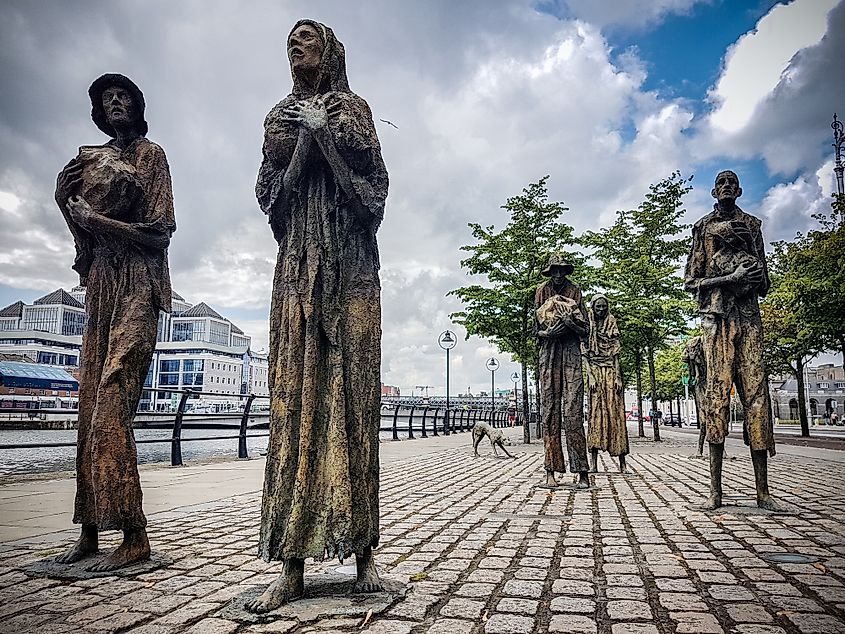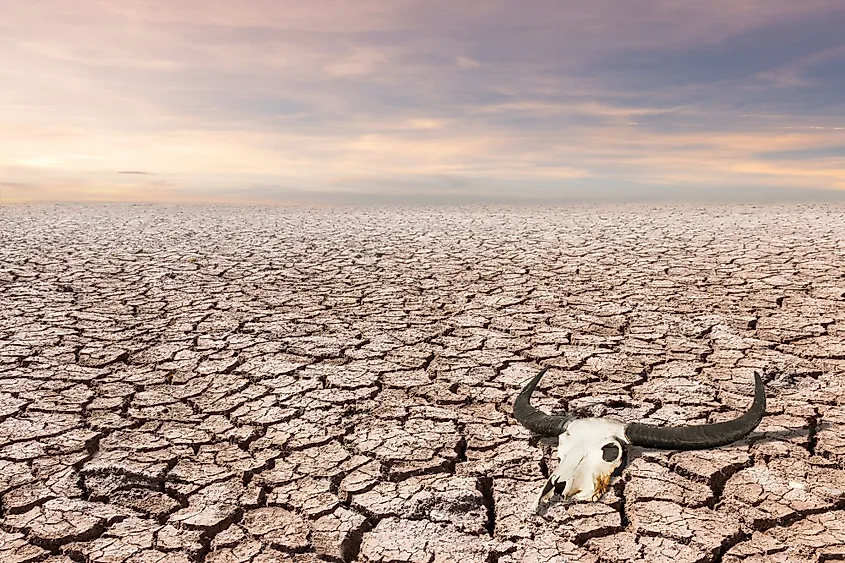What Causes Famine?

- According to Oxfam America and The Famine Early Warning Systems Network, famine is a situation where one in five households experience an extreme lack of food and other basic needs and where starvation, death, and destitution are evident.
- Civil war, political conflict, and social unrest are among the leading causes of hunger worldwide.
- A report by the UN’s Food and Agricultural Organization (FAO) has found that climate change is also among the leading causes of global hunger.
- The coronavirus pandemic that upended the lives of millions globally and forced economies to a screeching halt, is now threatening to cause famine “of biblical proportions” according to the Chief of UN’s Food Relief Agency.
What Is Famine?
According to Oxfam America, a global advocacy group dedicated to helping local organizations tackle poverty and The Famine Early Warning Systems Network famine is a situation where one in five households experience “an extreme lack of food and other basic needs where starvation, death, and destitution are evident." During this period, people die not just of hunger but because of infectious diseases brought about by the deficiency in vitamins and minerals due to the lack of proper sustenance and hence nutrition.
A paper by NS Schrimshaw published in the Annual Review of Nutrition lists several social consequences of famine including “mass migrations of people in search of food, breakdown of social behavior, abandonment of cooperative effort, loss of personal pride and sense of family ties, and finally a struggle for individual survival.”
What Causes Famine?

Famines have been happening for many years and while others believe that it is mainly caused by explosive population growth, many argue that the world has more than enough food for everyone. Several studies have shown that at present the world can produce enough food for 1.5 times the world’s global population. Why then is famine still a problem?
The answer lies not just in solving the scarcity of resources but more on tackling the lack of access to them or its unequal distribution mainly because of several man-made factors. Here are just a few that experts believe eventually lead to global hunger:
- Lack Of Infrastructure
- Political And Military Conflict
- Corruption
- Economic Instability
- Poor Government Policies
- Deforestation
- Climate Change
- Global Pandemic
Lack Of Infrastructure
In many developing countries, the absence of proper public infrastructure causes a significant disconnect between an abundant supply and a hungry population. This is why even in countries with ample natural resources famine is a regular occurrence.
Infrastructures are needed to provide people with access to food sources and goods. A country’s poor transportation, communication, and energy infrastructure lead to unequal distribution of food and other goods leaving many local populations hungry. Simply put, food doesn’t reach them, and they do not have affordable and efficient ways to access supplies.
Political And Military Conflict

Civil war and conflict are also among the leading causes of world hunger. For instance, In South Sudan, war has caused the displacement of people with many leaving their homes and crops to escape the conflict. Abandoned fields and the inability to plant crops due to the war disrupting their daily lives means loss of harvest and reduced food sources in an area. People who are forced to flee face hunger due to the lack of means to afford necessities. Also, during conflicts and social unrest, markets shut down, cutting people off from their food supply and reducing their access to goods.
Corruption
A corrupt government is a government that’s unable to put the needs of its people first. Corruption hinders public servants from crafting policies to improve the lives of the population and reduces budgets for the improvement of infrastructure needed to give people access to food sources. Instead of allocating funds to alleviate the condition of their people corrupt governments line their pockets with money leaving the masses scrambling to survive and unable to feed their families.
Economic Instability
When the economy suffers, people’s livelihoods are affected. Economic instability pushes families below the poverty line. During this time, people lose jobs and the economy experiences high inflation decreasing the value of money in turn increasing the prices of goods and services. More families become unable to afford necessities. Access to food becomes limited and many are forced to live off of inadequate sustenance. Severe economic shocks can fuel poverty and in turn, cause hunger and malnutrition.
Poor Government Policies
Bad government policies have caused famine in several parts of the world in the past. Policies control how resources are used and which strategies are put in place to make sure the people are fed and gain access to food supplies. A mismanaged government and poor government policies cause systemic problems that lead to a lack of investment in agriculture or infrastructure that will give equal and affordable access to food sources. Misplaced priority often leads to food insecurity.
Deforestation
According to experts from the Center for International Forestry Research (CIFOR), famine in the Horn of Africa was also caused by decades of deforestation. The victims of famine in refugees in Kenya, Ethiopia, and most notably in Somalia which has lost a significant portion of its forests, could have been saved if destruction of the forests in the area was avoided. According to the CIFOR research conducted in 25 countries, “forests serve as a crucial defense against poverty, providing about a quarter of household income for the people living in or near them, they also provide sources of food and fuel, particularly in tough times.”
Climate Change

A report by the UN’s Food and Agricultural Organization (FAO) has found that climate change is among the leading causes of global hunger. Extreme heat, droughts, storms, and floods, as well as other extreme weather conditions, are affecting the quality of water sources, reducing yields of staple crops, and producing an unpredictable harvest. Rising sea levels cause flooding that not only drown crops but also seep into freshwater sources making it unsafe for people to drink by exposing it to bacteria and other contaminants. Climate change affects the quality of people’s food supply and drastically disrupts people’s livelihood, and eventually, shrink food sources or limit people’s access to them.
1. Global Pandemic
The coronavirus pandemic that upended the lives of millions globally and forced economies to a screeching halt, is now threatening to cause famine “of biblical proportions” according to the Chief of UN’s Food Relief Agency. The group believes that the economic problems that will come after the pandemic will cause a humanitarian and food emergency. According to the Global Report on Food Crises, by the UN Food and Agriculture Organisation, around 250 million people globally could be pushed to starvation post-pandemic. Due to massive unemployment and underemployment, millions of families will not be able to afford necessities even food so governments need to act fast to mitigate these consequences.











